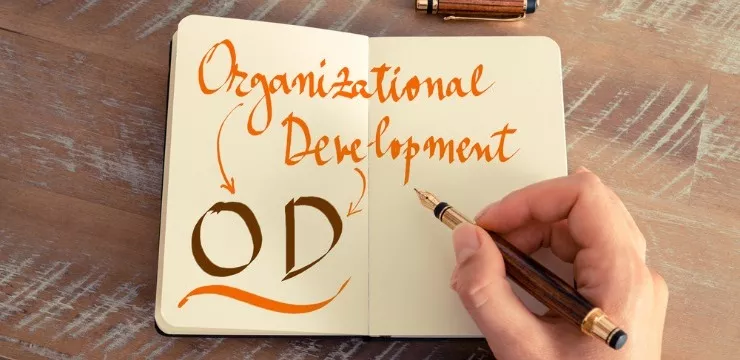
What is your weakest link in change and organizational development?
It may not be what you think it is…
There are a few factors that contribute to transformations:
- Internal obstacles, such as budgets, tools, or culture
- External obstacles, such as business partners or vendors
- The prevailing paradigm
In many instances, change managers focus on internal change.
However, what good is change if you outpace your own network of partners and vendors?
In change and organizational development, the entire value chain matters.
Change management is critical to enabling successful organizational development and change.
But organizations are part of an ecosystem that includes:
- Suppliers
- Partners
- Customers
- The organization itself
In other words, no organization is an island.
The speed of any supply chain is capped by its weakest link.
And this analogy holds true internally as well as externally…
A business’s efficiency is limited by its weakest internal function.
Where are your internal weak links?
Here are a few common factors that limit business efficiency:
- Technology and tools. The right digital tools are a must. To stay modern and relevant, an organization’s IT, infrastructure, and software must also be modern. Those that fall short in this area will be at a competitive disadvantage.
- Skills. Digital skills close the gap between workers and their tools. Without the right skills, workers won’t be engaged or productive.
- Culture. Culture is another factor that directly affects organizational change, change management, and the efficiency of the organization. Cultures that are open to change will implement changes faster, more efficiently, and more effectively.
Areas such as these are often the focus of change management and digital transformation.
However, as mentioned, what’s the use of adopting the latest communication tools if your partners still use fax machines?
Identify the weakest links in your supply chain.
The same categories that affect an organization also affect its partners and vendors:
- IT, digital adoption, and digital transformation
- Culture and habits
- Knowledge and skills
Limitations in any of these areas will affect every other link within that supply chain.
A supply chain’s efficiency can be capped by a weak link, resulting in a “catch 22” – businesses across the chain avoid transforming because they will still be limited by their weak partners.
Transform your value chain.
Obviously this is easier said than done.
There is no straightforward way to influence and transform your own company, let alone an entire chain of partners.
However, in today’s economy, some ecosystems, verticals, and niches are transforming. And others are lagging.
We have seen, for instance, how some companies have elevated entire industries.
Amazon transformed retail.
Google transformed search.
And Apple transformed mobile.
Most of us will not be able to transform entire industries, but we can influence our own partners and vendors.
The best place to start is within…
Internal Transformation
Change and organizational development should start within one’s own organization.
To modernize and stay competitive, these are good places to start:
- Digital adoption. Digital adoption isn’t the same as technology adoption – a generic term that doesn’t focus on ROI. Digital adoption emphasizes using new technology “to its fullest extent” – maximizing user productivity and, therefore, software ROI.
- Digital skills training. Training for employees and users is an essential ingredient for digital adoption efforts. The right training and the right tools – such as digital adoption platforms – dramatically improve digital adoption and transformation efforts.
- Cultural change programs. There is no such thing as a “right” or “wrong” corporate culture. However, certain attributes are more conducive to profitable, effective change. Today, corporate cultures should consider cultivating traits such as digital literacy, agility, human-centrism, and so forth.
These will help your own company do one of two things: keep up with a fast-paced supply chain or help influence your supply chain.
Transforming the Value Chain
The value chain and the supply chain extend from the customer all the way back to the initial manufacturers and suppliers.
Here are a few ways you can begin prodding your network to move forward:
- Improving your own systems and processes. The first place to start is your own business, as mentioned. There is clearly no reason to influence partners if your own organization is still behind.
- Incentivizing partners. One way to influence partners is through incentives. For instance, partners who use a certain technology or tool may be given discounts, bonuses, better contracts, or other preferential treatment. In the right circumstances, such incentives can help fuel digital transformation and adoption.
- Upgrading the customer experience. Customer demands drive transformation across many industries. When they begin demanding better experiences, faster service, and so on, vendors must respond.
- Cultivate a network that is modern and cutting-edge. Another option is to actively seek out the right partners and vendors. This will serve a dual function. It will directly improve your own supply chain and it will indirectly send a message to laggards.
To repeat: none of this is easy.
But in a world where ecosystem after ecosystem is transforming, it’s necessary.
To meet the changing demands of customers, partners, and adjacent ecosystems, digital transformation, change, and organizational development are required.
WalkMe Team
WalkMe spearheaded the Digital Adoption Platform (DAP) for associations to use the maximum capacity of their advanced resources. Utilizing man-made consciousness, AI, and context-oriented direction, WalkMe adds a powerful UI layer to raise the computerized proficiency, everything being equal.



